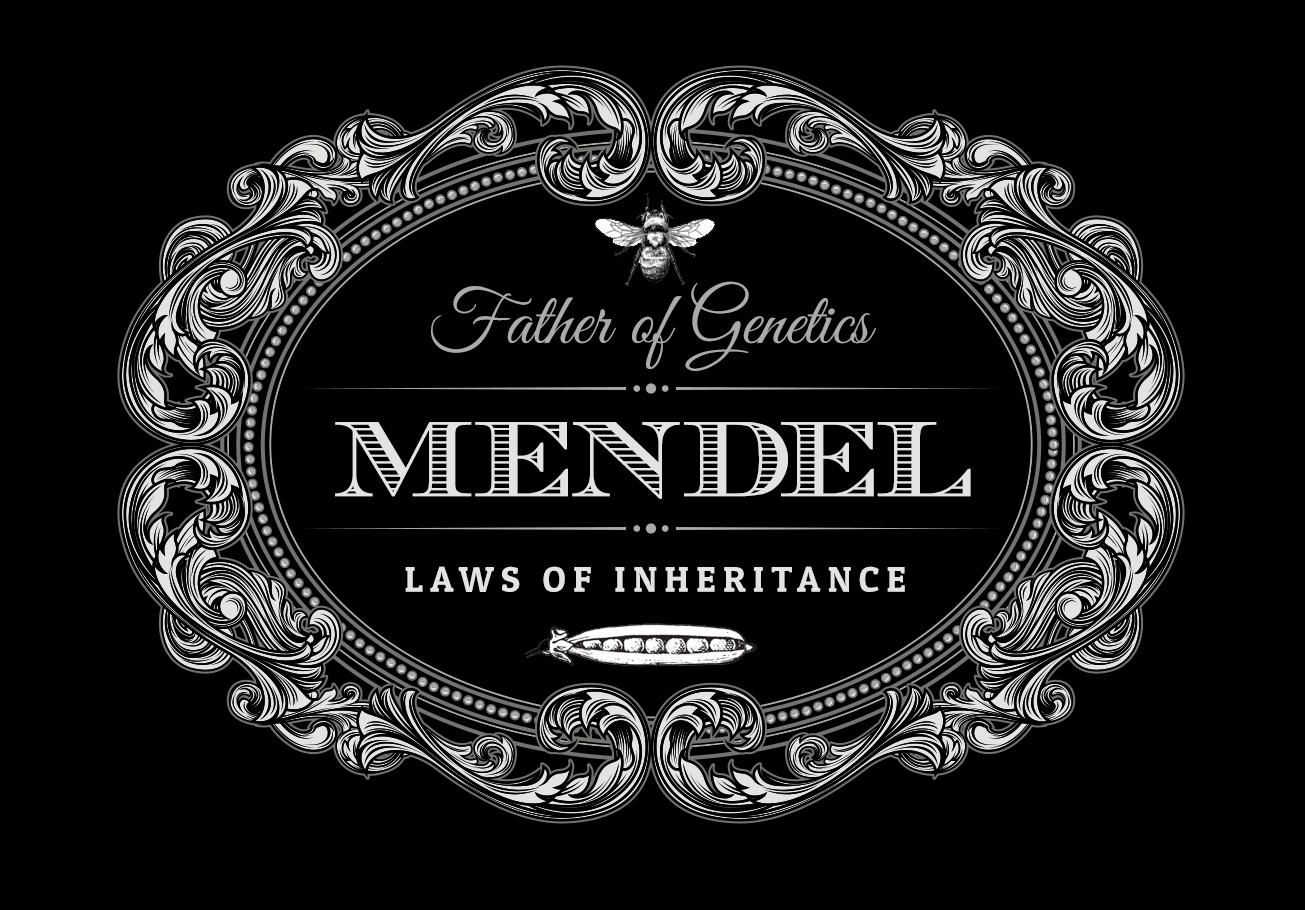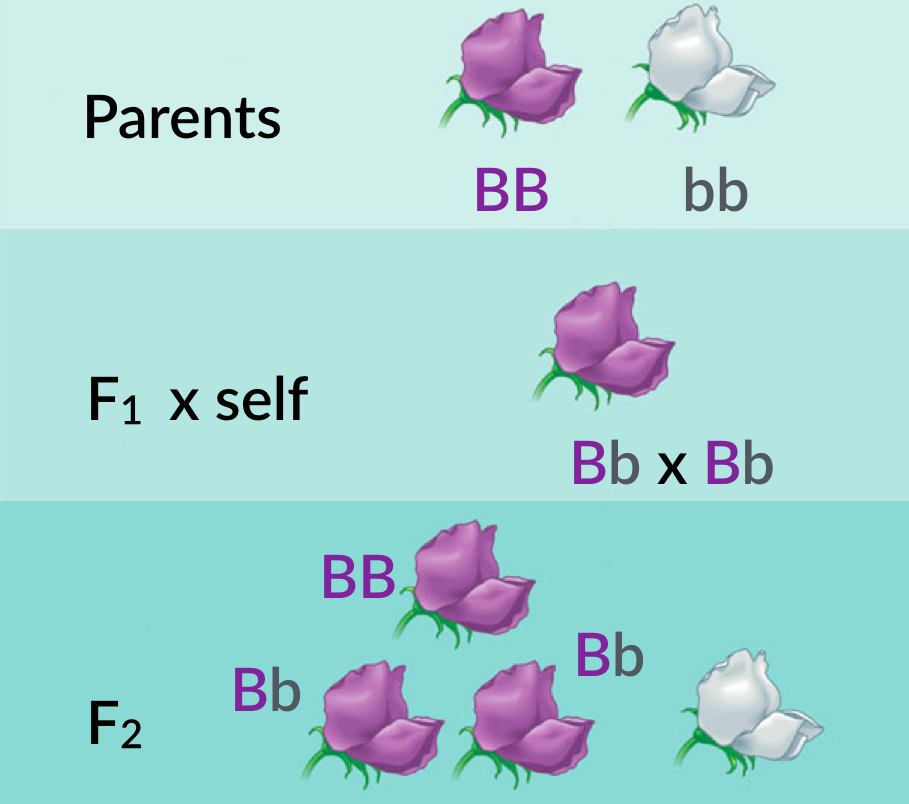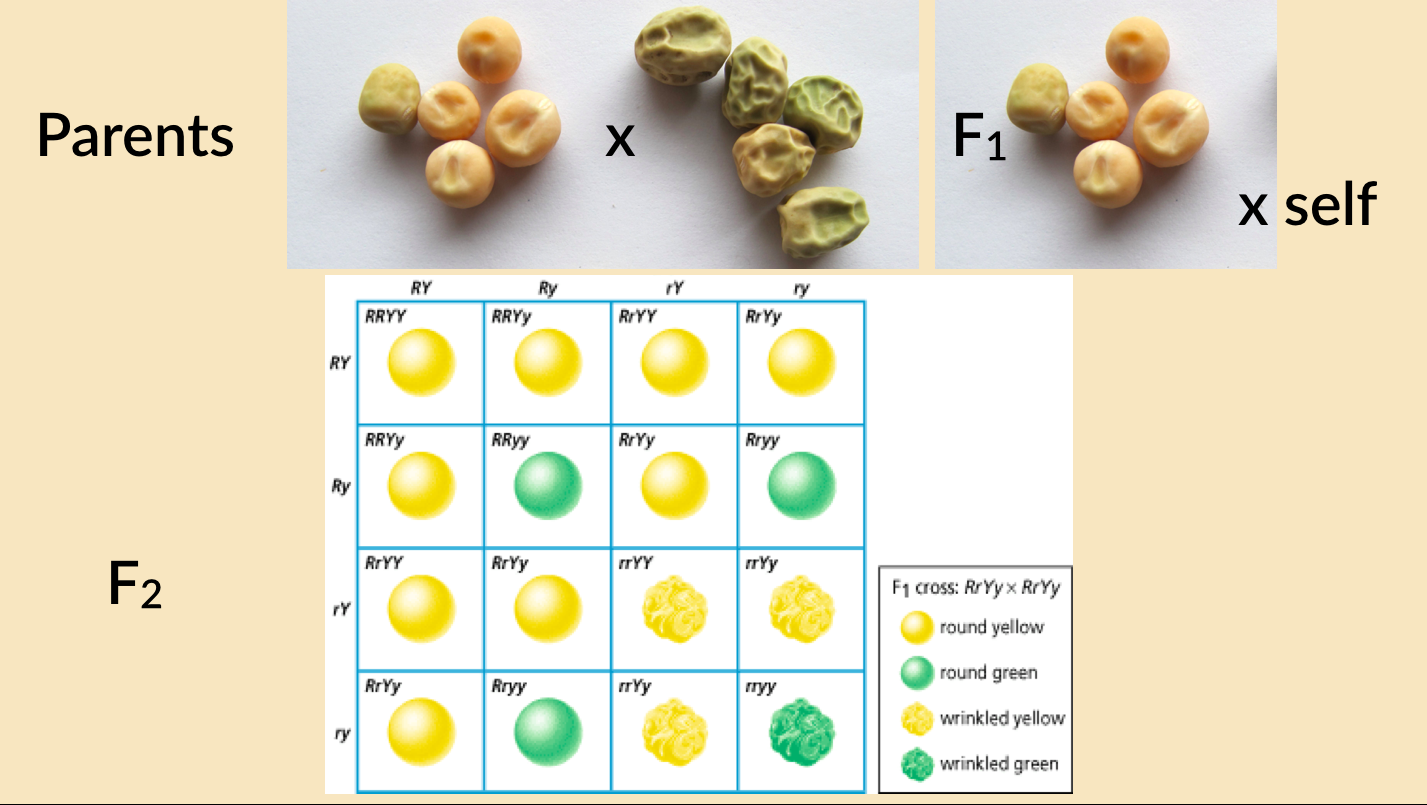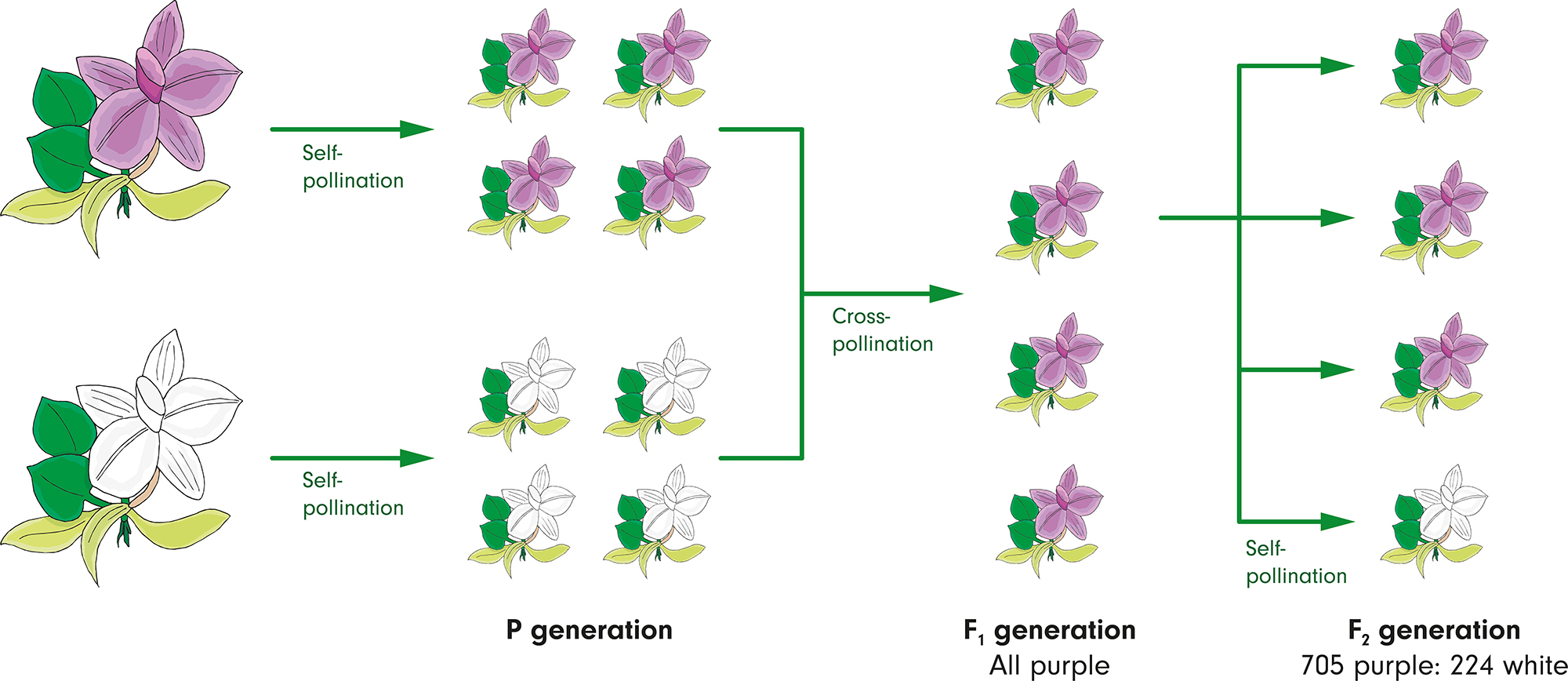Mendel The Laws of Inheritance


Mendel Outcomes
-
Describe Gregor Mendel\’s pea plant research, including the difference between a dominant and recessive allele (factor).
-
Explain what are separating in Mendel\’s Law (principle) of Segregation.
-
Explain what are inherited independently of each other in Mendel\’s Law (principle) of Independent Assortment.
Gregor Mendel is often called the \”Father of Genetics\” but the significance of his inheritance research was not recognized in his lifetime.
KEY TERMINOLOGY introduced in lab
Gene: the part of DNA that codes for a protein.
Dominant: this allele\’s protein is produced.
Genotype: the combination of alleles (factors) in an organism.
Allele (or factor): version of a gene.
Recessive: when the dominant allele is present, the recessive allele\’s protein is not produced.
Phenotype: the observable traits.

Gregor Mendel observed, experimented, and analyzed data. His laws provided an accurate description of some forms of inheritance, laying the groundwork for future advancements. It took almost a century for other researchers to develop an explanation, or theory, for what Mendel was describing.
Law: description of a natural phenomenon supported by a body of knowledge.
Theory: explanation of a natural phenomenon supported by a body of knowledge.

Mendel described the idea that \”factors\” (now called alleles) could be dominant or recessive. For example, when an allele/factor for purple pea flower color was present in a pea plant, the flowers would be purple, even if a white allele was also present. The purple allele would dominate over the white allele. We now know that means the protein for purple color is being produced, but not proteins associated with white color.
To get white pea flowers, a pea plant would have to have only white alleles: one from the pollen, the other from an egg. If there is no purple allele to dominate over it, two white alleles will result in a white flower.
This is sometime referred to as Mendel\’s Principle of Dominance, with \”principle\” meaning a law that describes a phenomenon.


Mendel also explained that when a pea plant formed its gametes (pollen or eggs), alleles/factors could separate from each other. For example, If a pea plant had both a purple allele and a white allele (Bb), some of the gametes would have a dominant \”B\” and others would have a recessive \”b\” allele. This is the Principle (law) of Segregation. Segregation means \”to separate,\” and the two alleles are separating from each other when gametes are formed.
Here the capital letter \”B\” indicates the dominant allele, and the lower case \”b\” indicates the recessive allele. Other letters could have been used like: Ff, Gg, Tt, etc.
Mendel wasn\’t done; so far we have been looking at one trait (flower color) with two alleles linked to versions of the trait (purple, white flower color. This is a monohybrid (one-trait) cross.
What if you crossed parents that had two different traits (pea color and pea surface), each with two alleles (yellow/green; smooth/wrinkled? What happens if there is a dihybrid (two-trait) cross?

The first generation looked like what we saw with the monohybrid cross: it you started with a smooth & yellow parent crossed with a wrinkled & green parent, the smooth & yellow dominated.
But when you crossed these first generation offspring, a bit of a surprise is that new combinations of traits appeared; smooth & green, wrinkled & yellow.
Mendel was on it: he decided that the pea surface texture and pea flower color traits were inherited independently of each other. Just because a pea was yellow, it didn\’t mean it had to be smooth. This is his Principle (law) of Independent Assortment. The traits are passed on independently of one another.

Check your knowledge. Can you:
-
describe Gregor Mendel\’s pea plant research, including the different between a dominant and recessive allele (factor)?
-
explain what are separating in Mendel\’s Law (principle) of segregation?
-
explain what are inherited independently of each other in Mendel\’s Law (principle) of independent assortment?